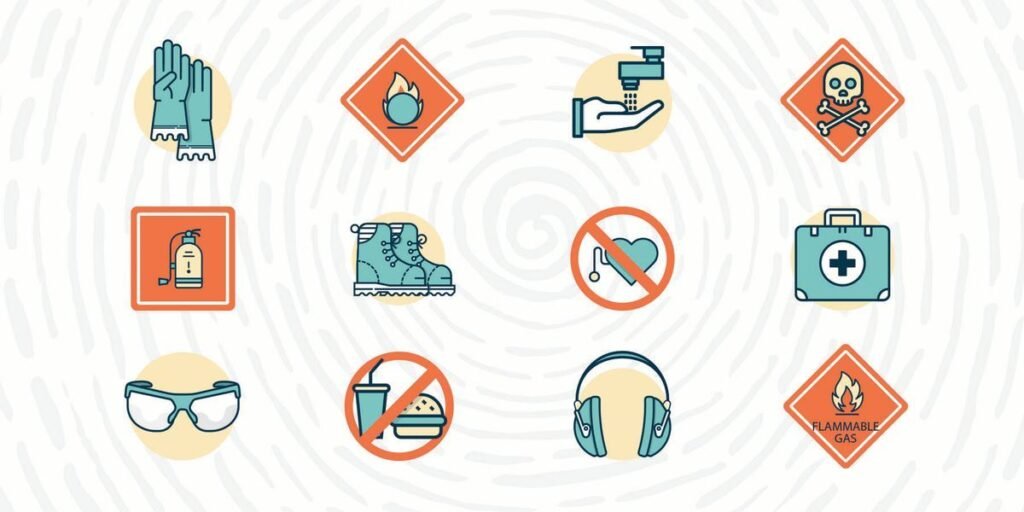Picture this: You’re going about your daily routine, minding your own business, when suddenly an accident occurs. In the blink of an eye, a degloving injury can forever change your life. This harrowing type of injury involves the stripping away of skin and underlying tissue from the face, leaving victims with devastating physical and emotional scars. But fear not! In this blog post, we will delve into the world of degloved face injuries – what causes them, who is at risk, and most importantly, how to prevent them. So grab a cup of coffee (or tea!), sit back, and let’s dive into this critical topic together!
Understanding Degloving Injuries
Degloving injuries are a traumatic and gruesome form of injury that occur when the skin and underlying tissue are forcefully detached from the underlying structures, such as bones or muscles. The result is a severe avulsion that leaves the affected area vulnerable, both physically and aesthetically.
These injuries can vary in severity, ranging from partial degloving where only a portion of the skin is torn away, to complete degloving where the entire area is exposed. While these injuries most commonly affect areas like hands, arms, or legs due to accidents involving machinery or heavy objects, they can also occur on the face with equally devastating consequences.
The face is particularly susceptible to degloved injuries due to its prominent position and delicate structure. Accidents such as motor vehicle collisions, workplace mishaps involving industrial equipment or machinery malfunctioning can lead to this type of injury. Additionally, sports-related accidents or falls from heights may also pose a risk.
Causes of Degloving Injuries
Degloving injuries occur when the skin and underlying tissues are forcefully separated from the underlying structures, resulting in severe damage. These injuries can happen in various situations and environments, often with devastating consequences.
One common cause of degloving injuries is motor vehicle accidents. The impact force involved in these accidents can easily lead to the shearing and separation of skin and soft tissues from bones or muscles. Similarly, industrial accidents involving heavy machinery or equipment can also result in degloving injuries due to crushing forces.
Sports-related incidents, especially those involving high-speed activities like motorcycle racing or water sports, can also lead to degloved face injuries. Falls from heights or onto hard surfaces are another significant factor contributing to these types of traumatic injuries.
Additionally, certain occupations carry a higher risk for degloved face injuries. Workers in construction, manufacturing, mining, and agriculture may be exposed to hazards that increase their chances of experiencing such an injury on the job.
High-Risk Occupations for Degloved Face Injuries
Certain occupations pose a higher risk of degloving injuries to the face due to their nature and the potential hazards involved. These injuries can be devastating, causing severe trauma and long-term consequences. It is important to identify these high-risk occupations in order to prioritize safety measures and prevent such accidents from occurring.
1. Construction Workers: Construction sites are known for their hazardous conditions, with heavy machinery, falling objects, and sharp tools present. As construction workers often work at heights or in confined spaces, they are particularly susceptible to degloving injuries if proper precautions are not taken.
2. Industrial Workers: Employees working in manufacturing plants or factories where heavy equipment is used should also be aware of the risks involved. Machinery malfunctions or lack of machine guarding can lead to serious accidents resulting in facial degloving injuries.
3. Oil Rig Workers: Working on an oil rig entails numerous risks due to the complex machinery and volatile substances involved. The combination of heavy equipment, slippery surfaces, and extreme weather conditions puts these workers at a heightened risk of degloving injuries.
4. Agricultural Workers: Farming involves operating machinery like tractors, combines, and other equipment that can cause severe facial injuries if safety guidelines aren’t followed strictly.
5. Emergency Responders: Paramedics and firefighters frequently encounter situations that put them at risk for facial degloving injuries while attending emergencies involving car crashes or industrial accidents.
6. Healthcare Professionals: Surgeries carry inherent risks; healthcare professionals who perform surgeries may inadvertently expose themselves to potential dangers associated with surgical instruments that could result in facial degloving if mishandled.
It is crucial for employers in these high-risk industries to implement stringent safety protocols aimed at preventing degloving injuries through comprehensive training programs as well as providing appropriate personal protective equipment (PPE). By prioritizing worker safety through education about potential hazards and enforcing strict adherence to safety guidelines, employers can significantly reduce the occurrence of degloving injuries in these
Safety Measures and Precautions to Prevent Degloving Injuries

When it comes to preventing degloving injuries, taking proactive safety measures is crucial. By implementing the right precautions, individuals can significantly reduce the risk of suffering from these traumatic injuries.
First and foremost, proper training is essential for anyone working in high-risk occupations where degloved face injuries are more common. This includes industries such as construction, manufacturing, and agriculture. Training should cover not only general safety protocols but also specific information on how to avoid degloving accidents.
In addition to education, employers must prioritize workplace safety by implementing strict guidelines and regulations. Regular inspections of machinery and equipment can help identify potential hazards before they result in an accident. Employers should also encourage employees to report any unsafe conditions or near misses promptly.
Personal protective equipment (PPE) plays a crucial role in preventing degloving injuries. Workers in high-risk occupations should always wear appropriate gear such as helmets with face shields or visors, gloves designed for their specific tasks, and sturdy work boots that provide ankle support.
Conclusion
Degloving injuries to the face can have devastating consequences and should be taken seriously. Understanding the causes and risk factors associated with these injuries is crucial in preventing them from occurring.
Whether you work in a high-risk occupation or simply want to take precautions to protect yourself, there are several safety measures you can implement. Always prioritize personal protective equipment (PPE) such as helmets, goggles, and face shields when working in hazardous environments. Additionally, be mindful of your surroundings and practice good workplace safety habits.
Remember that prevention is key when it comes to avoiding degloving injuries. By being aware of the risks and taking proactive steps to mitigate them, you can significantly reduce the likelihood of experiencing this traumatic injury.


